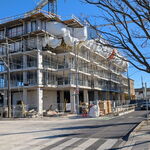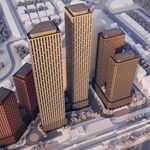Great if so. But I see more than a few problems with that:
1. The load / unload speed. Just look at the GO car door layout, and compare to the subway car door layout. The GO cars are a lot less efficient, and the double deckers are the worst. That's not a big problem when the trains run once in 30 min or even once in 15 min. But try going to every 7 min or every 5 min, and you might not be able to pull the next train into a busy station because the previous train is still sitting there unloading.
2. Platforms at Union: do we have enough of them for all services?
3. Stairs / elevators at Union. Compare them to the subway stairs; the latter are a lot wider. Can the Union stairs handle the subway scale loads?
4. GO trains require full break tests every time they change directions. Perhaps we can organize the frequent GO lines in such a way that none terminates at Union / all run through Union, that should help. But they still need to terminate and turn back somewhere; can they do that trick while maintaining a 5-min frequency?
5. Track conflicts between services. Yonge subway tracks and Bloor subway tracks do not cross each other at grade, obviously. But today's GO trains use routes / tracks that cross each other. Again, fine for 30-min frequencies, tight for 15-min, not suitable for 5-min. Can grade separation be added at every place where needed? Not sure again.
Now when I see a Metrolinx report, vetted by the engineers and stating that yes, we are going to 20,000 - 30,000 pphpd capacities on the major lines, then I'll happily throw all the above concerns into a garbage bin. But before that, forgive me for being a little skeptical







